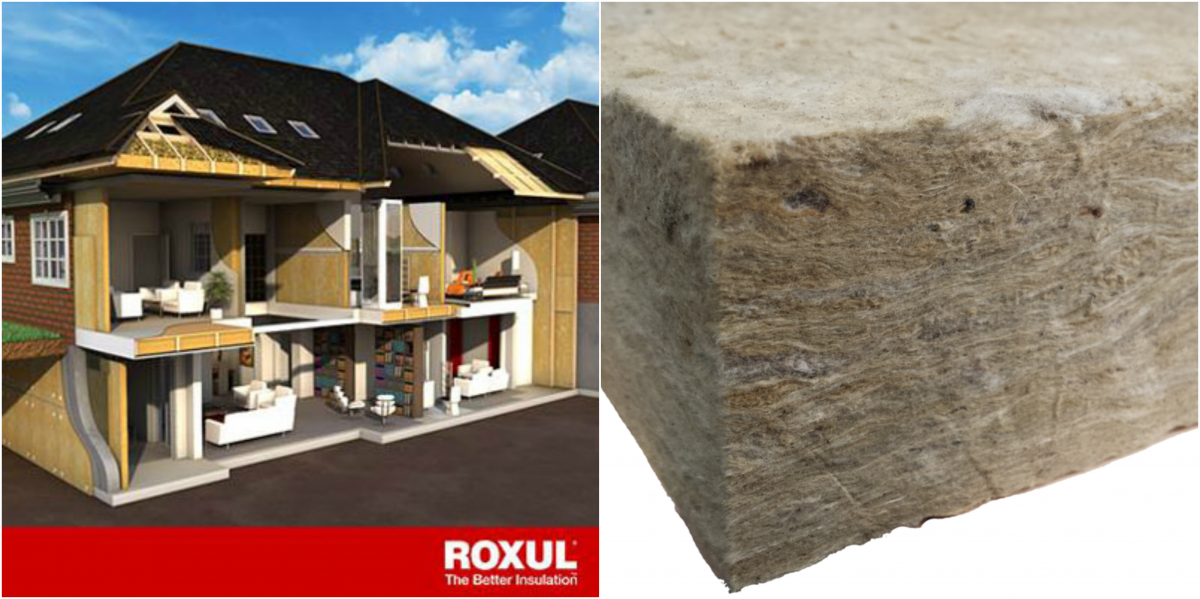Let’s face it. Life is hard.
Sometimes, pressures of work, family and bills can kick us in the teeth. And some days, we’re counting down the minutes to get home, kick off our shoes and chill. Maybe relax to some music or zone out with some Netflix. Better still, remove the confines of the day by removing our clothes – naked with no cares.
Reality, though, comes in the form of an uncomfortable and unhealthy home, as well as peeping Toms and unexpected visits from the in-laws. Just because you can relax in the raw, doesn’t mean you should!
As architects and builders, you may not be able give your clients peace of mind about walking around naked, but you can give them the comfortable sanctuary they crave in a cost-efficient home with clean air and ideal temperatures.
One excellent way to do just that is with mineral wool insulation, a building product made of rock that is heated and spun like cotton candy to create fibers, which are then put into batts and boards. It can be used in new construction or added to existing structures.
Environmentally friendly, it is composed of 85 percent recycled slag from the steel processing industry, and 15 percent raw basalt. Also, EPA testing confirms allergens and toxins are virtually non-existent.
That’s a major plus for all but especially for home owners with children.
Consider these additional, exceptional benefits of using mineral wool insulation:
Fire Resistance
The temperature range for house fires is 1200-1400 degrees F. Mineral wool insulation melts at 2150 degrees F. This means it will not catch fire. Because it is non-combustible, it doesn’t contribute to nor will it spread a fire. In addition, when heated it will not release toxic gases. Simply put, rock doesn’t burn. Designed to maintain its integrity when exposed to flames, mineral wool allows for escape in the event of a fire. Safety should be your number one concern for a client.
Sound Reduction
Mineral wool is an excellent acoustic insulation, because rock is a natural sound barrier. Due to its unique, non-directional structure, mineral wool is denser than conventional insulation and helps to absorb and minimize sound. Owners of concert halls and playhouses find it extremely effective for keeping sound within their buildings. On a smaller scale, your client will appreciate mineral wool keeping sound out for a quieter home.
Rot Resistance
Mineral wool insulation is permeable, allowing water and vapors to escape. Also, it is somewhat water repellent. And because mineral wool has no food source, it cannot grow mildew, mold or any bacteria. This is good news, not only for those with allergies and health conditions but also for you, the builder or architect, because it helps prevent lawsuits due to wall construction failure. Vapor open assemblies, especially to the exterior, present fewer risks.
Longevity
Mineral wool insulation does not shrink, change shape or crumble – despite temperature changes or humidity. It is maintenance-free and needs no replacement.
Mineral wool perhaps is most celebrated for its thermal properties. Because it contains tiny pockets of air trapped within its physical structure, mineral wool provides extraordinary insulation, creating the down blanket for homes in cooler climates and keeping heat out of homes in warmer climates. The obvious benefit is a reduction of heating/cooling costs. Reduction in energy use plus lifelong durability equals savings in your clients’ pockets over the long-run.
Sustainability
Recycled slag and raw basalt is plentiful, and mineral wool is recyclable. Therefore, resources aren’t drained in the production of mineral wool insulation.
Also, the energy saved from the installation of mineral wood insulation far surpasses the energy spent for its production. The money spent is minimal when compared to the long-term benefits.
The above are all benefits for your client, but there are some serious benefits to you as well. When it comes to new construction and existing buildings, your reputation and business are on the line. Any faulty building product or choice of building assembly can put your insurance premiums at risk. As building codes become more stringent, and wall assemblies become more complex, mineral wool insulation reduces your liability.
Mineral wool insulation is a deal maker, not a deal breaker.
While your clients might or might not enjoy their home naked, you can have peace of mind knowing you’re providing them the comfort to do so.
For more information, contact AE Building Systems.
Source: Roxul.com

